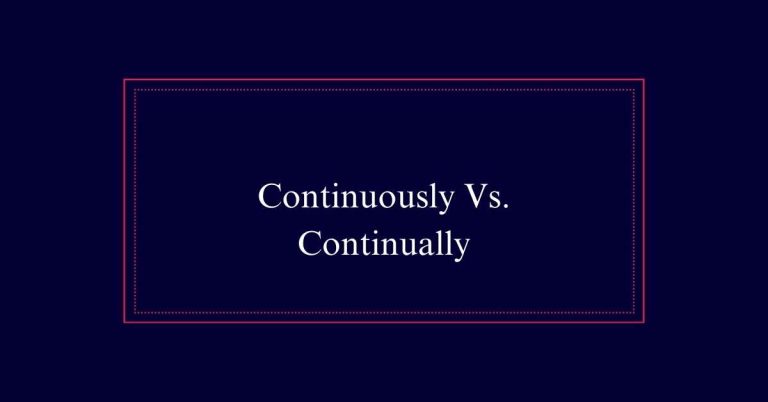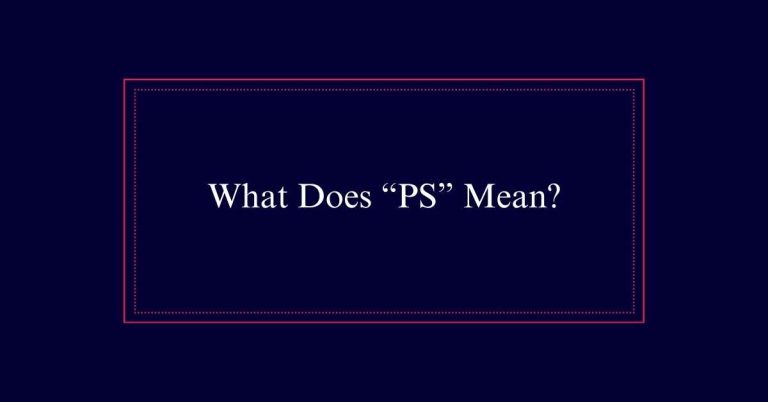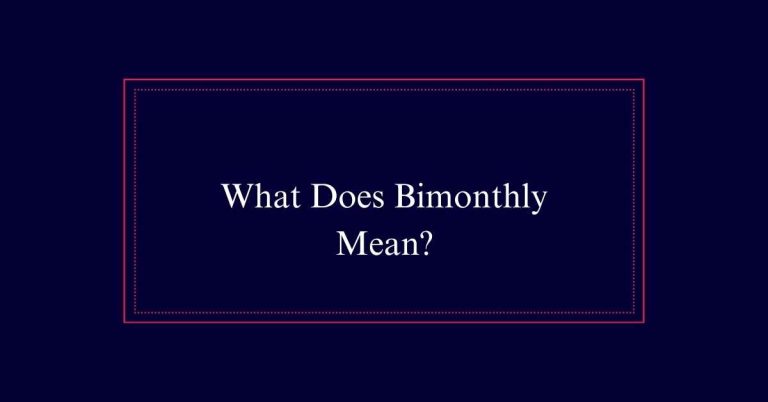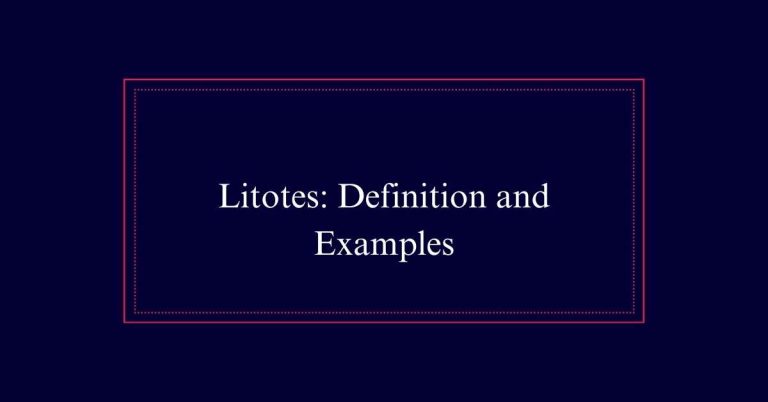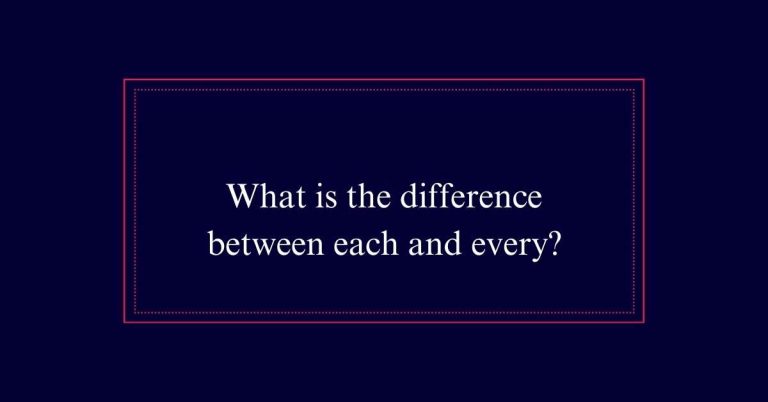What Does Nah Mean?
“‘Nah’ is an informal way of saying ‘no.’ It is used frequently in casual conversations, text messages, and social media. First recorded in 1920, it originated as part of an eye dialect, mimicking regional pronunciation. In American English, it has a short ‘a’ sound, while it may be pronounced differently in Cockney English. ‘Nah’ functions exclusively as an adverb, providing a direct, relaxed response. It follows standard capitalization rules in writing.
Meaning of Nah
The term ‘nah’ is an informal way of saying ‘no.’ It is often used in text messages and casual online writing.
The first recorded use of ‘nah’ dates back to 1920. It likely originated as part of an eye dialect, mimicking the pronunciation found in American dialects and Cockney English.
While ‘no’ serves as both an adverb and an adjective, ‘nah’ functions solely as an adverb. For example, one might say, ‘Nah, I didn’t throw out the garbage.’
Despite its informal nature, ‘nah’ follows standard capitalization rules in both informal and formal communication. Its simplicity and brevity make it a popular choice for conveying negation in everyday conversation.
Informal Usage
In informal settings, ‘nah’ is frequently employed to convey a casual or dismissive negation. This term is commonly used in everyday conversations, text messages, and social media interactions. Its relaxed tone allows for friendly, nonchalant communication. Below is a table illustrating different contexts and examples:
| Context | Example |
|---|---|
| Text Messaging | Wanna hang out tonight?” “Nah. |
| Casual Conversation | “Did you like the movie?” “Nah, not really.” |
| Social Media | “Is it worth watching?” “Nah, skip it.” |
| Informal Chats | “Are you coming to the party?” “Nah, I’m tired.” |
| Everyday Speech | “Do you need help with that?” “Nah, I’m good.” |
Historical Origins
Understanding its informal usage in modern communication, ‘nah’ has intriguing historical origins that trace back to the early 20th century.
The first known written use of ‘nah’ dates back to 1920. It likely emerged as part of an eye dialect, representing a phonetic spelling to reflect spoken language. This suggests it was used to capture the pronunciation found in American dialects and Cockney English.
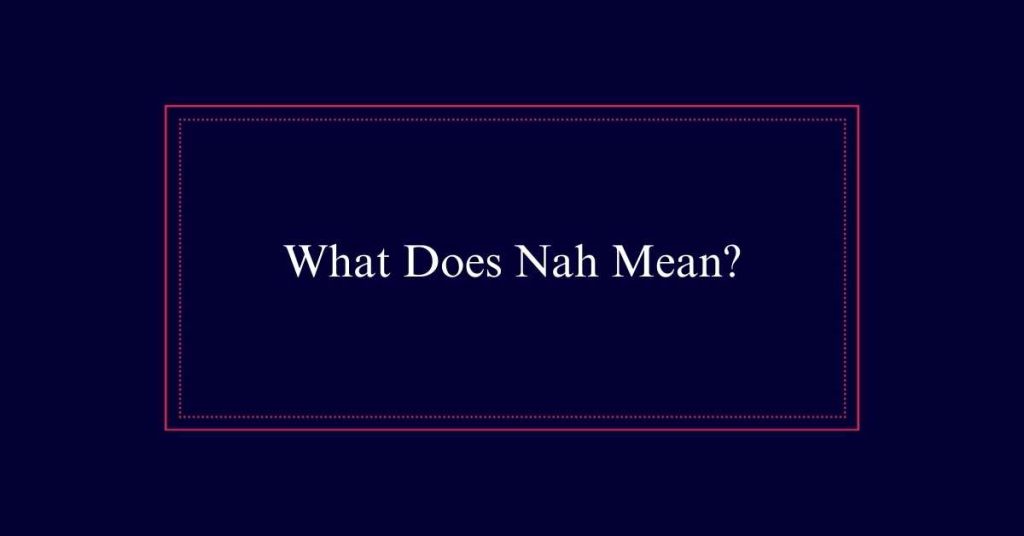
Over time, ‘nah’ evolved into a common informal expression, primarily used to indicate a casual refusal or disagreement. Its simplicity and ease of use made it popular in text messages and online communication, where brevity is key.
Eye Dialect
An eye dialect is a literary technique used to represent the phonetic spelling of words as they are spoken in various dialects. This approach brings authenticity to characters by showing how they speak, reflecting regional or cultural speech patterns. For example, the word “nah” can be seen as an eye dialect representation of the word “no.”
| Dialect | Standard English | Eye Dialect Spelling |
|---|---|---|
| American | No | Nah |
| Cockney | No | Nah |
| Southern | No | Naw |
| Scottish | No | Nae |
Pronunciation Variations
Exploring pronunciation variations reveals how the word ‘nah’ differs across regions and dialects. In American English, ‘nah’ is typically pronounced with a short ‘a’ sound, akin to ‘na’. This pronunciation is straightforward and commonly used in casual conversation.
Conversely, in Cockney English, ‘nah’ may be pronounced with a more pronounced ‘a’ sound, almost extending the vowel, making it sound like ‘naah’. These subtle differences highlight the regional influences on language.
Additionally, pronunciation can vary within the same country, reflecting local speech patterns and cultural influences. Understanding these variations enhances our appreciation of linguistic diversity and the dynamic nature of informal language. Each pronunciation carries its unique cultural and social connotations.
Adverb Use
The term ‘nah’ functions as an adverb to convey a negative response or refusal. It is commonly used in informal settings, such as text messages or casual conversations. Despite its informal nature, ‘nah’ follows standard adverbial usage by providing a direct answer to a question or a suggestion.
For example, when someone asks, ‘Do you want to go out?’ a simple ‘Nah’ suffices to indicate disinterest. It can also precede a comma when used at the beginning of a sentence, as in, ‘Nah, I’m not interested.’ This usage ensures clarity in communication, making it obvious that the speaker is declining or negating the proposition presented.
Common Examples
To further illustrate the use of ‘nah’ as an adverb, consider these common examples. In everyday conversation, someone might ask, ‘Did you finish the report?’ A typical response could be, ‘Nah, I didn’t have time.’
Similarly, in a casual setting, one might hear, ‘Are you coming to the party?’ and the reply could be, ‘Nah, I’ve got other plans.’ The term ‘nah’ effectively conveys a negative response without the formality of ‘no.’ It is widely used in informal spoken and written communication.
Another example is, ‘Do you want to order pizza?’ with the response, ‘Nah, I’m not hungry.’ These examples highlight the simplicity and directness of ‘nah’ in everyday language.
Texting Context
In texting, ‘nah’ serves as a quick and informal way to decline or disagree. It is commonly used because it is short and easily understood.
When someone asks a question or makes a suggestion, replying with ‘nah’ communicates a clear, yet casual, refusal. This term often appears in conversations among friends or in relaxed settings where formal language is unnecessary.
For instance, if asked, ‘Do you want to go out tonight?’ a simple response could be, ‘Nah, I’m staying in.’ The brevity of ‘nah’ makes it an efficient choice for texting, where speed and simplicity are valued.
Capitalization Rules
Capitalization of ‘nah’ follows standard rules even in informal communication. When used at the beginning of a sentence, ‘nah’ should be capitalized, just like any other word. For example, ‘Nah, I don’t think that’s a good idea.’
However, when used within a sentence, it remains in lowercase, such as ‘I said nah to his proposal.’ This consistency helps maintain clarity in writing.
Additionally, if ‘nah’ appears in a title or headline, it follows title capitalization rules, typically capitalizing the first and significant words. Proper capitalization guarantees that the meaning is clear and the text looks professional, even in casual contexts.
Frequently Asked Questions
Can Nah Be Considered Rude or Dismissive?
Yes, “nah” can be considered rude or dismissive depending on the context and tone. While it is generally informal, its perception varies. Professional communication should avoid “nah” to maintain courtesy and clarity.
How Does Nah Compare to Other Informal Negations?
Nah is often compared to informal negations like “nope” or “nahh.” While all convey a negative response, “nah” is typically shorter and more casual, often used in quick, informal exchanges such as text messages.
Can Nah Be Used in Professional Settings?
Using ‘nah’ in professional settings is generally inappropriate due to its informal nature. Professional communication should maintain a formal tone, utilizing words like ‘no’ or ‘not’ to guarantee clarity and maintain professional standards.


